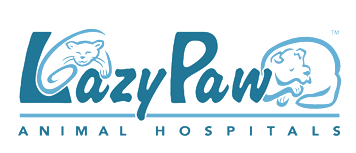Heatstroke during the Texas summer is very common for both dogs and humans. Some breeds of dogs, most notably the brachycephalic or short muzzled breeds, are more prone to heatstroke than other types. There is also an increased risk with the very large sized dogs as well as dogs that are obese.
It is important not to take them for jogs, runs or play time during the heat of the day, particularly in the direct sunlight as this can lead to heat stress. Be sure your dog has access to plenty of cool water and never leave your pet in your car as the temperature reaches degrees that can be fatal. Since dogs are relatively inefficient at keeping their body cool, heatstroke can occur very quickly. Normal body temperature for a dog is between 100 and 102.5 °F and heatstroke can begin to occur if the body temperature rises above 104 °F. Very severe heatstroke is usually measured as a body temperature of above 106°F.
The first signs of heatstroke can include rapid, shallow panting and thick, drool like saliva combined with a bright red tongue. The gums may be cherry red or extremely pale depending on the stage of the heatstroke. Very quickly if the dog is not cooled the symptoms will become life threatening. They can include vomiting, diarrhea, depression, weakness, dizziness, seizures and death.
At the first signs of heatstroke, you should place a cool, wet towel over your dog and bring them in to see the veterinarian for treatment immediately. If transport to the veterinarian is not possible, there are some recommended treatment options to stabilize your pet until you can transport to the veterinary hospital. If your dog is outside, it is important to get your dog indoors as quickly as possible. Place a wet towel or blanket over the dog and use a fan to provide air movement. Placing the dog in a cool room that is air conditioned is another option. Do not immerse the dog in iced water or very cold water unless you are under direct instructions from your vet. Cooling the body too quickly can be another health risk to the dog, particularly small and toy breeds. In addition the dog may be very weak the added stress of being in water may increase anxiety and fear for the pet.
Do not force the dog to drink until he or she wants too. Forcing water into the dog’s mouth can cause choking and respiratory problems. Once seen by one of our trusted veterinarians, we can do a full screening and provide hydration and electrolytes to minimize any impact of the shock to the dog’s system. In cases where the heatstroke was severe we may need to hospitalize the dog to make sure all body functions are working correctly before he or she can return home.
